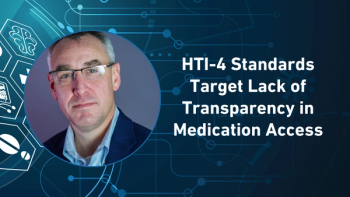
Transforming Pharma Supply Chains for the Age of Personalized Care
A prediction of how this shift toward patient-centric care may look.
In the not-so-distant future, healthcare will no longer be a one-size-fits-all endeavor. The industry is undergoing a seismic shift toward patient-centric care, where treatments and care are tailored to the individual, considering their genetic makeup, lifestyle, and unique needs. Picture a cancer patient treated with a hyper-personalized chimeric antigen receptor (CAR) T-cell therapy,1 which reengineers her own immune cells to combat cancer.
As compelling as the vision of patient-centric care is, it also poses a question: What will the supply chain for such patient-centric care look like? Unlike mass-produced drugs, many emerging therapies will be customized for the individual and require precise coordination and logistics. This process will often involve harvesting, modifying, and transporting unique human cells with extreme care to ensure they remain viable. Taking a patient-centric approach will require pharma companies to deeply rethink their supply chains, moving away from stockpiles and batch production to real-time patient orders.
Drivers of patient-centric care
Decentralized clinical trials and virtual trials can include patients from more demographic groups, which will mean better science and stronger participation and trust across all communities. This is great news for groups that have been underrepresented in clinical trials.2 However, this new model also requires direct-to-patient distribution of investigational products, supplies, and study materials. As more participants take part in these studies, the need for on-demand inventory increases.
Additionally, fast-developing individualized investigative medicines are growing in effectiveness and popularity. For example, CAR T-cell technology is a revolutionary cancer therapeutics. This treatment takes T-cells from a patient, re-engineers them in a lab, and reintroduces them back into the patient. The process requires a supply chain with no room for error: The cells must remain within strict condition parameters and be carefully tracked across their entire journey.
Partnerships with specialized manufacturing facilities must produce CAR-T products in a timely and quality-controlled manner. Pharma companies will need logistics capabilities to coordinate, plan, and schedule all players in the care journey to ensure patients receive CAR-T therapy promptly.
Wearable medical devices are also increasing. Drugmakers must coordinate the distribution from the manufacturing facility to distributors, wholesalers, or directly to healthcare providers, while providing key end-user post-sale support. Increasingly, this medical device supply chain will be enriched by data. For example, the internet of things data (IoT) from devices like pacemakers will not only measure battery health in real time but also feed that data back into the supply chain, leveraging predictive analytics to ensure batteries are available when needed, track their performance, and manage safe disposal.
All these developments in healthcare will cause a transition from a “push” to a “pull” supply chain. Advanced analytics and artificial intelligence (AI) can match need and supply by allowing companies to integrate data from various sources (sales, inventory, and demand forecasts).
Additionally, machine learning will help generate more accurate demand forecasts and perform near-real-time demand sensing. Again, this requires collaboration across supply chain industry partners to improve visibility into inventory levels and demand signals.
Strategies to redesign the supply chain
The main goal of redesigning pharmaceutical supply chains is to prevent interruptions in patient care, given the new reality of individualized therapies. When there are few options to treat a particular condition, the patient can’t simply select another treatment or wait for therapies to be on hand.
The supply chain must be fine-tuned to rapidly and effectively deliver precisely what each patient needs. The following five strategies can help the pharma industry redesign its existing supply chains to become more fully patient-centric.
1. Demand forecasting.
Implement advanced analytics and forecasting techniques to match patient needs, optimize inventory levels, reduce waste, and ensure that medications and treatments are available exactly where and when needed. By accurately predicting demand, pharmaceutical companies can streamline operations and respond more effectively to patient requirements.
2. Implement real-time inventory management with smart devices.
AI-powered systems can continuously monitor inventory levels, expiration dates, and usage patterns. Incorporating IoT devices and smart package tracking monitors medication usage, temperature, and humidity during storage and transportation while providing real-time data on inventory levels. This helps prevent stockouts, reduce waste, and ensure the availability of medications when patients need them. In the future, an intelligent supply chain can also respond to population-level health events. For example, an AI-powered supply chain theoretically could track regional spikes in pneumonia infections and autonomously alter supply chains to move medication to areas of need.
3. Optimize supply chains.
Establish end-to-end visibility across the supply chain to ensure transparency and traceability. This includes tracking the movement of medications from manufacturing to distribution, and ultimately to the patient. Real-time data and analytics can help identify potential bottlenecks and enable proactive decision-making. Advanced analytics tools can analyze supply chain data, identify trends, and predict demand patterns. These tools optimize inventory levels, improve distribution routes, and reduce lead times, ultimately ensuring timely medication supply to patients.
4. Use predictive maintenance.
AI can analyze medical devices and equipment data to predict maintenance needs and prevent breakdowns. These insights ensure critical equipment, such as refrigeration units for storing medications, function optimally, reducing the risk of medication spoilage and supply chain disruptions.
5. Detect fraud and prevent counterfeiting.
AI can analyze data patterns and identify anomalies to detect fraudulent activities or counterfeit medications in the supply chain. Implementing these technologies enhances the integrity and safety of the pharmaceutical supply chain, offering protection to both the drug manufacturer and patients.
The next-generation healthcare supply chain
Emerging trends require the pharma industry to shift supply chains from a “push” to a “pull” model. The existing one-size-fits-all model will not work in the next generation of healthcare. New emerging technologies such as AI can make this possible with better demand forecasting and inventory management to meet personalized care service needs.
When it comes to patient-centric care, timely and agile delivery is key. The pharma industry’s supply chain function will have a powerful role to play in the future of medicine by working with regulators, technology partners, and healthcare stakeholders.
About the Author
Srini Rajamani is the Business Unit Head of Wipro.
References
1. CAR T Cells: Engineering Patients’ Immune Cells to Treat Their Cancers. National Cancer Institute. March 10, 2022.
2. Driving Diversity and Equity in Clinical Trials. Wipro. August 2021.
Newsletter
Stay ahead in the life sciences industry with Pharmaceutical Commerce, the latest news, trends, and strategies in drug distribution, commercialization, and market access.




